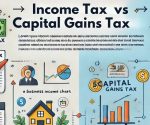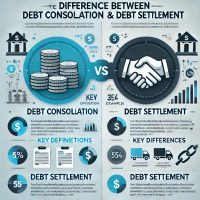The difference between inventory and fixed assets lies in their role and purpose within a business. Inventory includes goods held for sale or production, while fixed assets are long-term resources used to generate income over time. Understanding the differences between them is very important for effective financial management, accounting, and decision-making purposes. In the succeeding text, we shall discuss in detail the meaning, nature, and key differences between inventory and fixed assets.
What is Inventory?
Inventory refers to the goods or materials a business holds for sale, production, or operational use. It plays a vital role in the short-term revenue generation of a company by ensuring that products are available for customers and raw materials are ready for production processes.
Key Features of Inventory
Inventory plays a vital role in a business’s operations, encompassing goods for production or sale and supporting short-term revenue generation. Its management ensures smooth operations and customer satisfaction.
- Short-Term Nature: Inventory is typically consumed, sold, or converted into finished goods within a short period, usually under a year.
- Categories of Inventory: Raw Materials: Inputs used in production. Work-in-Progress: Goods partially completed in the production process. Finished Goods, Completed products ready for sale.
- Valuation Methods: Inventory is valued using methods like FIFO (First In, First Out), LIFO (Last In, First Out), or Weighted Average Cost.
- High Turnover: Inventory is replenished frequently to meet operational and sales needs.
What is Fixed Assets?
Fixed assets refer to long-term tangible or intangible resources owned by a company and used in its operations. These assets are not meant for resale but for generating revenue over an extended period. Examples include buildings, machinery, vehicles, and patents.
Key Features of Fixed Assets
Fixed assets are an absolute resource of any business for the simple reason that they support the long-term operations of such a business and therefore generate sustained revenues.
- Long-Term Use: Fixed assets are designed for use over an extended period, typically more than one accounting cycle. They are retained by the business to support operations and are not intended for immediate disposal.
- Tangible or Intangible: Fixed assets can be either tangible or intangible. Tangible fixed assets include physical items such as machinery, buildings, and equipment, which are visible and have a concrete form. Intangible fixed assets, like trademarks, patents, and goodwill, lack a physical presence but hold significant value for the business.
- Depreciation: Most fixed assets, with the notable exception of land, experience depreciation over time. Depreciation reflects the gradual loss of value due to usage, wear and tear, or obsolescence. This process is accounted for annually to reflect the true value of the assets in financial statements.
- Non-Liquid: Fixed assets are non-liquid, meaning they cannot be quickly converted into cash without disrupting business operations. Selling or liquidating these assets often involves a lengthy process and could impact the organization’s ability to function effectively.
Types of Fixed Assets
Fixed assets are long-term resources critical for a business’s operations, contributing to revenue generation and overall growth.
- Tangible Fixed Assets: Tangible fixed assets are physical assets in the form of equipment, machines, buildings, furniture, and land. Fixed assets can be used to conduct operations that generate revenue. They depreciate with time. Tangible fixed assets provide long-term value and contribute immensely to daily operations.
- Intangible Fixed Assets: Intangible fixed assets are patents, copyrights, goodwill, and licenses, all non-physical assets that have significant value both legally and in competition. They depreciate, although not through traditional depreciation, but through amortization which has been explained.
Difference Between Inventory & Fixed Assets
The inventory vs fixed assets comparison highlights their unique roles in business operations. Below are five key differences:
Definition
- Inventory: Inventory refers to goods that a business holds either for sale or for use in the production process. These items are part of the company’s short-term assets and are intended to generate immediate revenue.
- Fixed Assets: Fixed assets, on the other hand, are long-term resources used by a business to support its operations and revenue generation over an extended period. These assets are not intended for sale but are essential for the ongoing functioning of the business.
Purpose
- Inventory: The primary purpose of inventory is to support short-term revenue generation. It includes finished goods ready for sale, raw materials for production, and work-in-progress items that will soon be completed and sold.
- Fixed Assets: Fixed assets serve a different purpose. They enable long-term production and income generation by providing the infrastructure, equipment, and tools necessary for operational activities.
Nature
- Inventory: Inventory is short-term in nature and consumed, sold, or transformed into finished products within one business cycle. Businesses are constantly replenishing inventory to meet customer demand and to fill production needs.
- Fixed Assets: Fixed assets, however, are long-term in nature. These assets are used repeatedly several times over the years and constitute the base of the operational capabilities of the company. They are neither consumed nor sold as a part of the normal course of business.
Valuation
- Inventory: Inventory is valued using methods such as First-In-First-Out (FIFO), Last-In-First-Out (LIFO), or Weighted Average. These methods ensure accurate representation of inventory costs in financial statements and compliance with accounting standards.
- Fixed Assets: Fixed assets, in contrast, are depreciated annually to reflect their wear and tear or obsolescence. Depreciation accounts for the gradual reduction in the asset’s value over time and is crucial for accurate financial reporting.
Turnover
- Inventory: Inventory has a high turnover rate because it is frequently sold or consumed. Businesses regularly replace inventory to keep up with customer demand and maintain smooth production cycles.
- Fixed Assets: Fixed assets, however, experience low turnover. These assets are not frequently replaced due to their durability and high cost. Companies retain fixed assets for years, making them stable components of the business infrastructure.
| Aspect | Inventory | Fixed Assets |
| Definition | Goods held for sale or production. | Long-term resources used in operations. |
| Purpose | Supports short-term revenue generation. | Enables long-term production and income generation. |
| Nature | Short-term, consumed, or sold quickly. | Long-term, used over several years. |
| Valuation | Valued using FIFO, LIFO, or Weighted Average. | Depreciated annually to account for wear and tear. |
| Turnover | Frequently replenished or sold. | Low turnover; not frequently replaced. |
Conclusion
The difference between inventory and fixed assets lies in their purpose, duration, and impact on a business’s operations and finances. While inventories contribute to short-term sales and operative continuity, fixed assets provide the basis for long-term production and growth. Both of these asset types are important, and good management is what preserves financial stability and operational efficiency.
Inventory vs Fixed Assets FAQs
What is the primary difference between inventory and fixed assets?
Inventory is held for short-term sales or production, while fixed assets are long-term resources used in operations.
Can inventory be considered a fixed asset?
No, inventory is a current asset used for short-term revenue generation, unlike fixed assets, which are not for resale.
How are fixed assets depreciated?
Fixed assets are depreciated annually, except for land, to account for wear and tear.
What are examples of inventory?
Examples include raw materials, work-in-progress goods, and finished products.
Why is the inventory turnover rate higher than that of fixed assets?
Inventory is frequently replenished or sold, whereas fixed assets are used for long-term purposes.


